$16 Million, Cutting-Edge Flight Training Center Opens on Prescott Campus
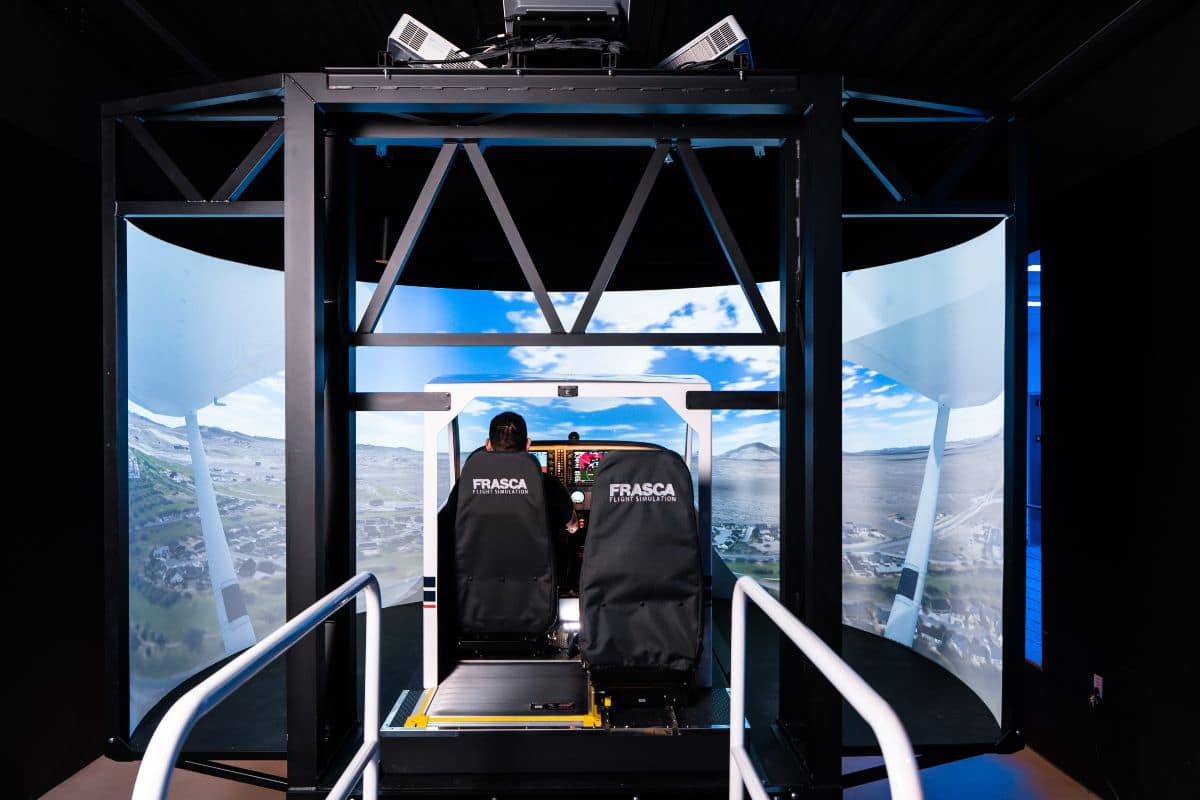
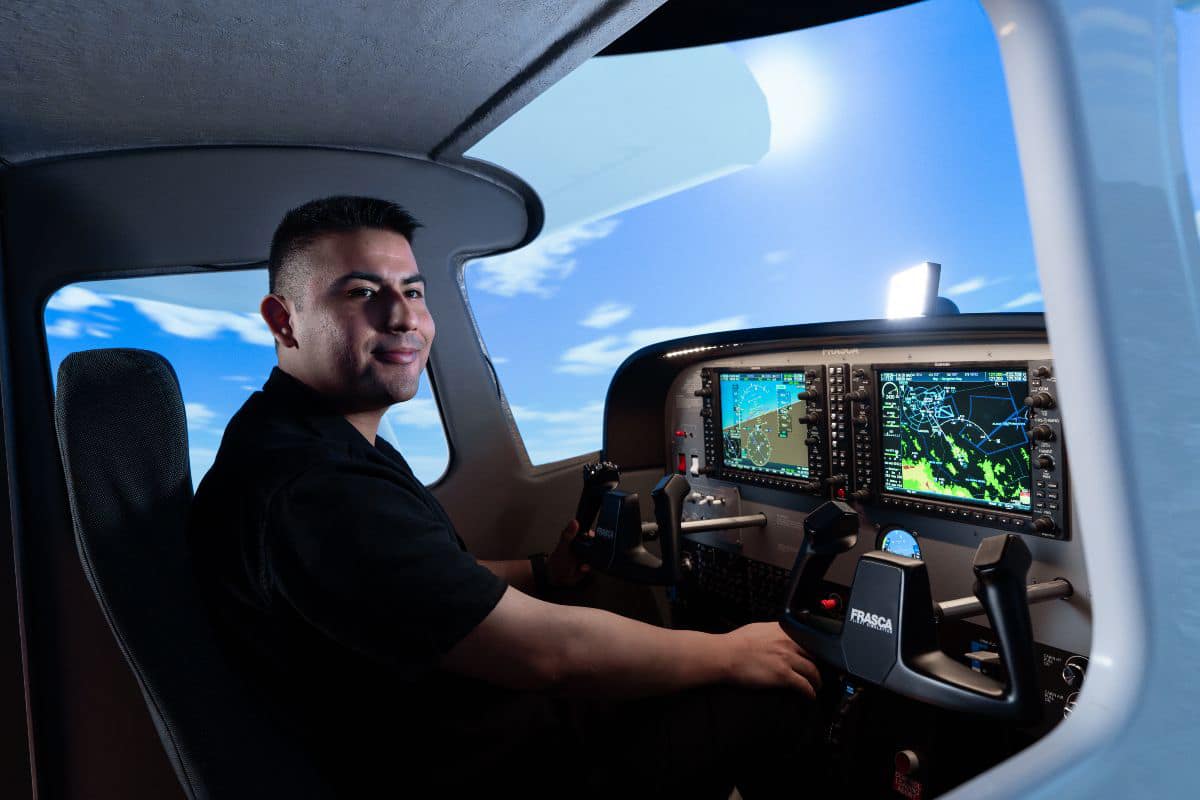
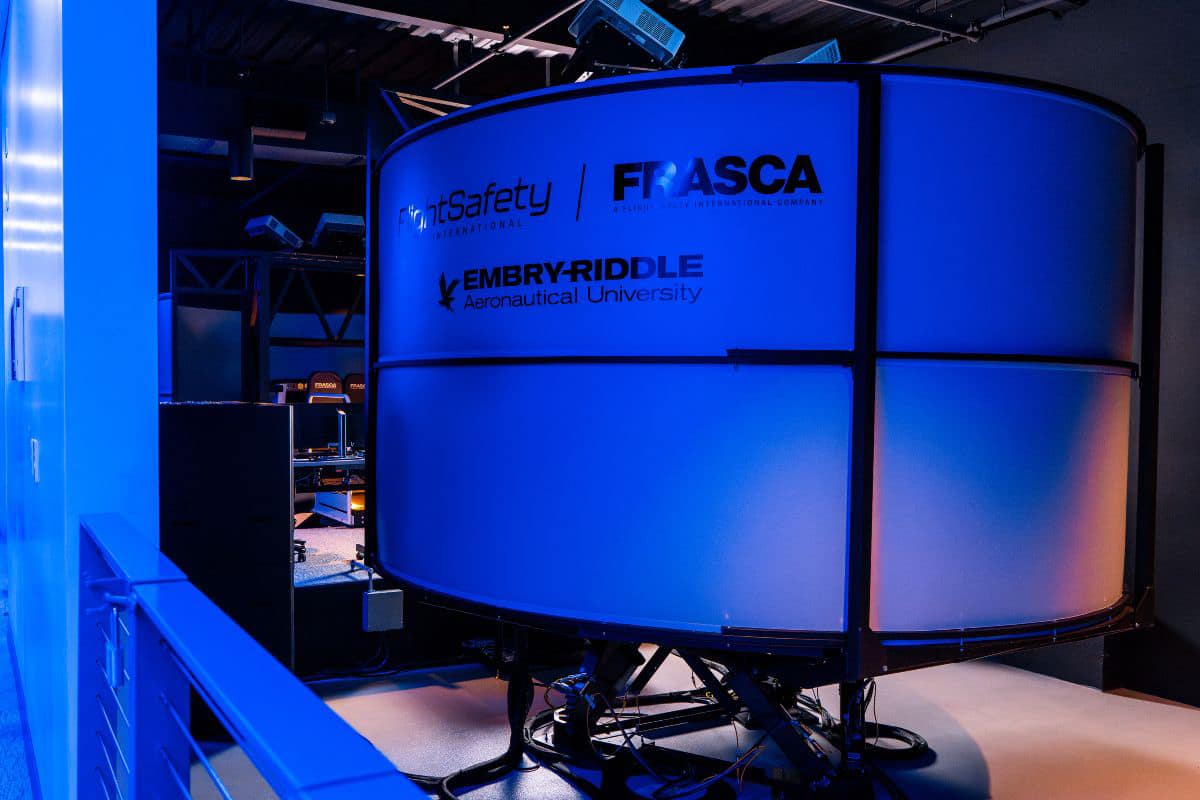
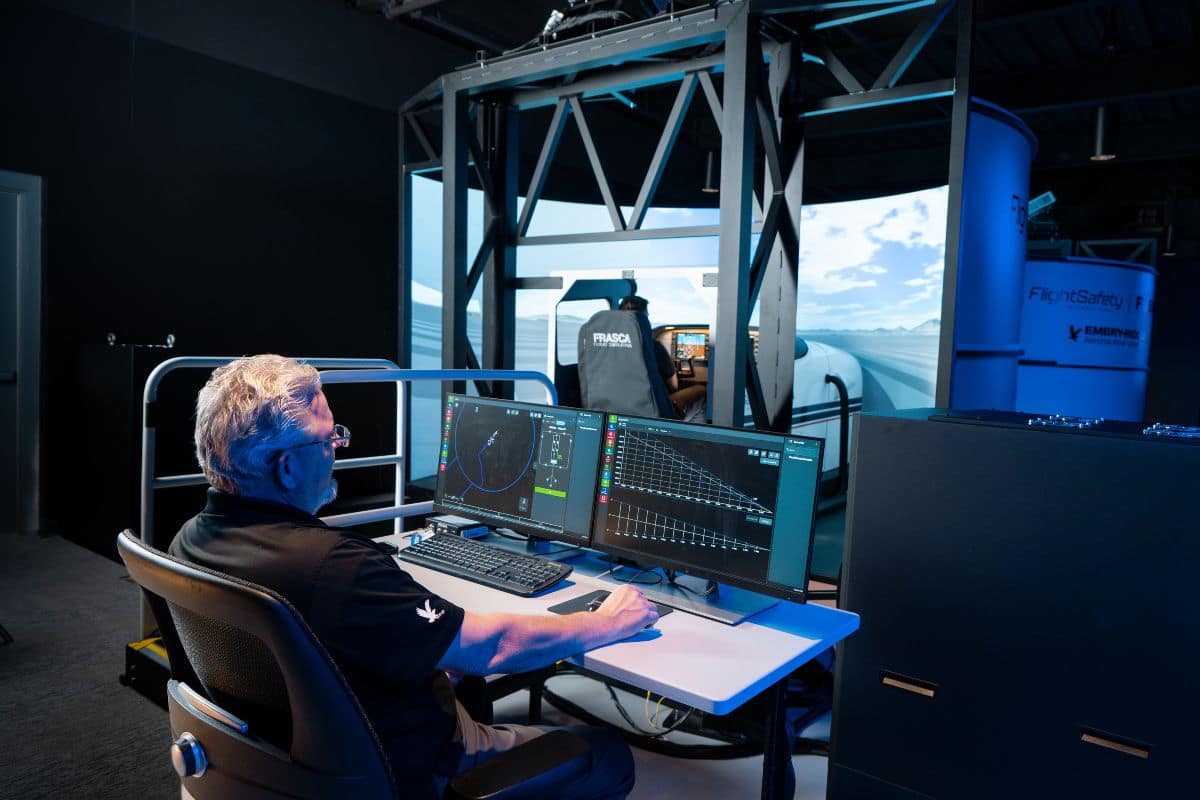
A dramatically modernized and expanded flight training center boasting the latest in simulation technology has made its debut on Embry-Riddle Aeronautical University’s Prescott Campus.
The revamped David L. & S. Harry Robertson Flight Simulation Center comprises 16,000 square feet of modern digital infrastructure to support high-fidelity simulators and student-focused spaces. A $16 million investment, the new training center greatly enhances the university’s best-in-class flight education, said Parker Northrup, chair of the Prescott Campus Flight Department.
“By increasing simulation capacity, we’re creating a more balanced instructional experience, improving the quality of each training hour in and out of live aircraft,” Northrup said. “This will better prepare our students for the high standards required for a safe and successful career in the aviation industry.”
Immersive Simulation Technology
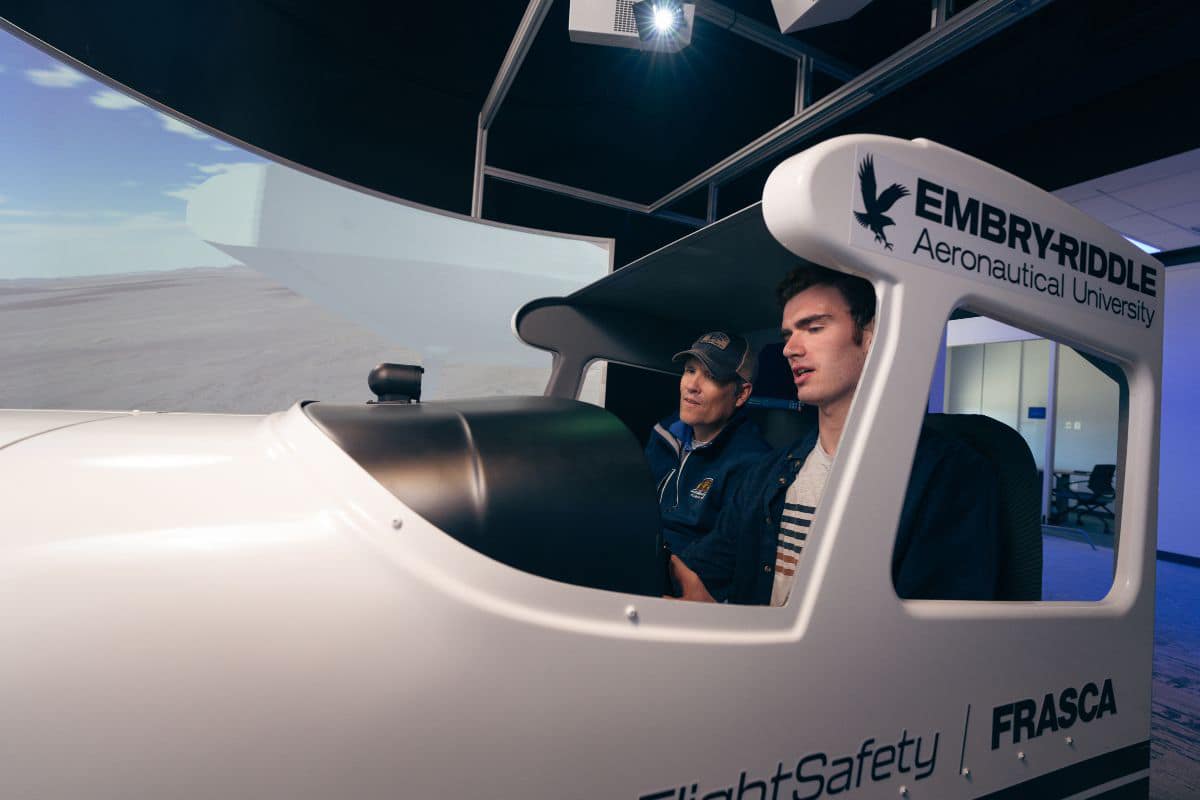
Provided by FRASCA, Embry-Riddle’s newest simulators give trainees full-motion immersion along with realistic visual displays and feedback systems. (Photo: Embry-Riddle / Wilson Van Ness)
The center, whose first capabilities came online in September, is equipped with FRASCA fixed-wing simulators and full-motion devices modeled after Cessna 172 and Diamond DA42 aircraft, the university’s primary training craft. D.J. Cassady, flight simulation manager at the Prescott Campus, said these advanced tools will offer students a highly immersive experience to practice complex flight maneuvers with unprecedented realism.
The new simulators feature modern projectors that display vivid flight scenarios. A six-axis electro-motion cueing system replicates realistic aircraft movements. This technology deepens student immersion, allowing them to experience conditions such as turbulence, crosswind landings and other advanced maneuvers. Smoke generation devices simulate fire in the cockpit.
“This hands-on experience, combined with realistic environmental visuals and feedback systems, allows students to refine their skills in handling safety-sensitive scenarios in a controlled setting that ensures a positive transfer of training to real-world flying,” Cassady said.
The facility includes infrastructure for a future Level D Full Flight Simulator, which is used in commercial jet training. Embry-Riddle is exploring corporate partnerships to acquire this equipment.
The modernized simulation center also incorporates technology for gathering data in real-time, enabling instructors to tailor training sessions.
“I can collect training data and have a student reinstruct that lesson in a simulator eight times with identical configurations like airspeed and altitude,” Northrup explained. “In a live aircraft, the student would have to undergo the entire flight process repeatedly, and each time may not have the same conditions. In a simulator, we can isolate errors in performance and make an increased effort to correct them.”
Additionally, the modernized facility is designed to integrate virtual reality flight training technology. Embry-Riddle has been a pioneer in VR flight training, employing the technology to reduce training time and costs while increasing students’ preparedness before entering an aircraft. The new VR capabilities are expected to launch in the summer of 2025.
The combination of VR training and real-time flight data also paves the way for the flight department to leverage artificial intelligence to further address individual student needs.
A Lasting Legacy of Aviation Safety
The renovated facility honors the legacies of Dr. S. Harry Robertson and his son, David L. Robertson. Since 1973, the Robertson Family has been instrumental in shaping the vision of Embry-Riddle Aeronautical University, driving the university’s progress as a global leader in aviation and aerospace education, research and safety.
“Harry and David Robertson’s impact on Embry-Riddle is extraordinary,” said Dr. Ken Witcher, chancellor of the Prescott Campus. “The Robertson family’s legacy is woven into the fabric of our institution, and it will inspire generations of students and faculty for decades to come.”
As Embry-Riddle approaches its centennial celebration in 2025-26, the expanded center marks a significant milestone in its ongoing mission to push the boundaries of aviation education.
“The David L. & S. Harry Robertson Flight Simulation Center is an example of the innovative flight training capabilities that make Embry-Riddle a destination for those seeking a career in aviation and aerospace,” Witcher added.

 Keaton S. Ziem
Keaton S. Ziem